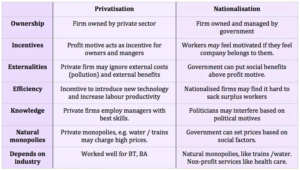Privatization of Indian Railways

Pros of Privatization of Indian Railways
Improved Infrastructure
- Niti Aayog’s strategy for New India @75 envisages many targets in railway infrastructure such as increasing the speed of infrastructure creation from the present 7 km/day to 19 km/day, 100% electrification of broad gauge track by 2022-23.
- Given this, a strong argument in favour of privatization is that it will lead to better infrastructure which in turn would lead to improved safety, reduction in travel time, etc.
Improved Quality of Services
- Indian Railway services are marred by issues like lack of punctuality, mismanagement in the form of stinking washrooms, lack of water supply and dirty platforms.
- Privatisation may solve these issues, as the move would foster competition and hence lead to overall betterment in the quality of services.
Technology Infusion
- The privatization will also help in accommodating the latest technology in railways coaches, safety and travelling experience. Thereby, it may help Indian Railways to become a world-class network.
Cons Related to Privatization of Indian Railways
Coverage Limited to Lucrative Sectors
- An advantage of Indian Railways being government- owned is that it provides nation-wide connectivity to bring regional development.
- This would not be possible with privatisation since routes which are less popular may be neglected, thus having a negative impact on connectivity.
- It may also render some parts of the country virtually inaccessible and omit them from the process of development.
- For example, regions with rugged terrain and low population density like Himalayan states and North eastern states.
Increased Fares
- Given that a private enterprise runs on profit, thus it may be assumed that the easiest way of accruing profits in Indian Railways would be to hike fares.
- This would render the service out of reach for lower income groups.
- Also, this would defeat the purpose of the Indian railways which is meant to serve the entire population of the country irrespective of the level of income.
Issue of Cross-Subsidisation
- Indian Railways tend to cross-subsidise passenger fares through freight revenue.
- This translates to below cost pricing, which will make it difficult for private players to compete.
Conflict of Interest
- Currently, the Ministry of Railways is effectively the policy maker, regulator and service provider.
- This, as the Bibek Debroy committee pointed out, is a clear conflict of interest and would undermine the fair competition between private and government railway operations and impede the efficient privatisation process of Indian Railways.
Social Welfare Concerns
- As the Indian Railways plays a vital role in transportation of goods in the country, it provides a low cost of transportation of many final and intermediate goods.
- Thus, the privatization of the system motivated by profit making, will have an inflationary effect and thereby affect the common people.
Way Forward
- Sustainable Pricing: There is a need to revisit Indian Railways pricing model to make the passenger and freight segments sustainable. The tariffs should be competitive with the cost of road transportation.
- Independent Regulator: Setting up an independent regulator will be critical for creating a level playing field for private players.
- In this pursuit, there is a need to expedite the process of establishing the Rail Development Authority, as it is already approved by the government.
- Modernization of Railways: There is a need to implement the recommendations of the Bibek Debroy committee, such as expansion of Indian Railways manufacturing company, Corporatization of core functions of railways, etc.
Conclusion
The need of the hour is to find a balanced solution that would incorporate the pros of both private and government enterprises and enhance the image of Indian Railways as it continues to serve the world’s largest democracy.

